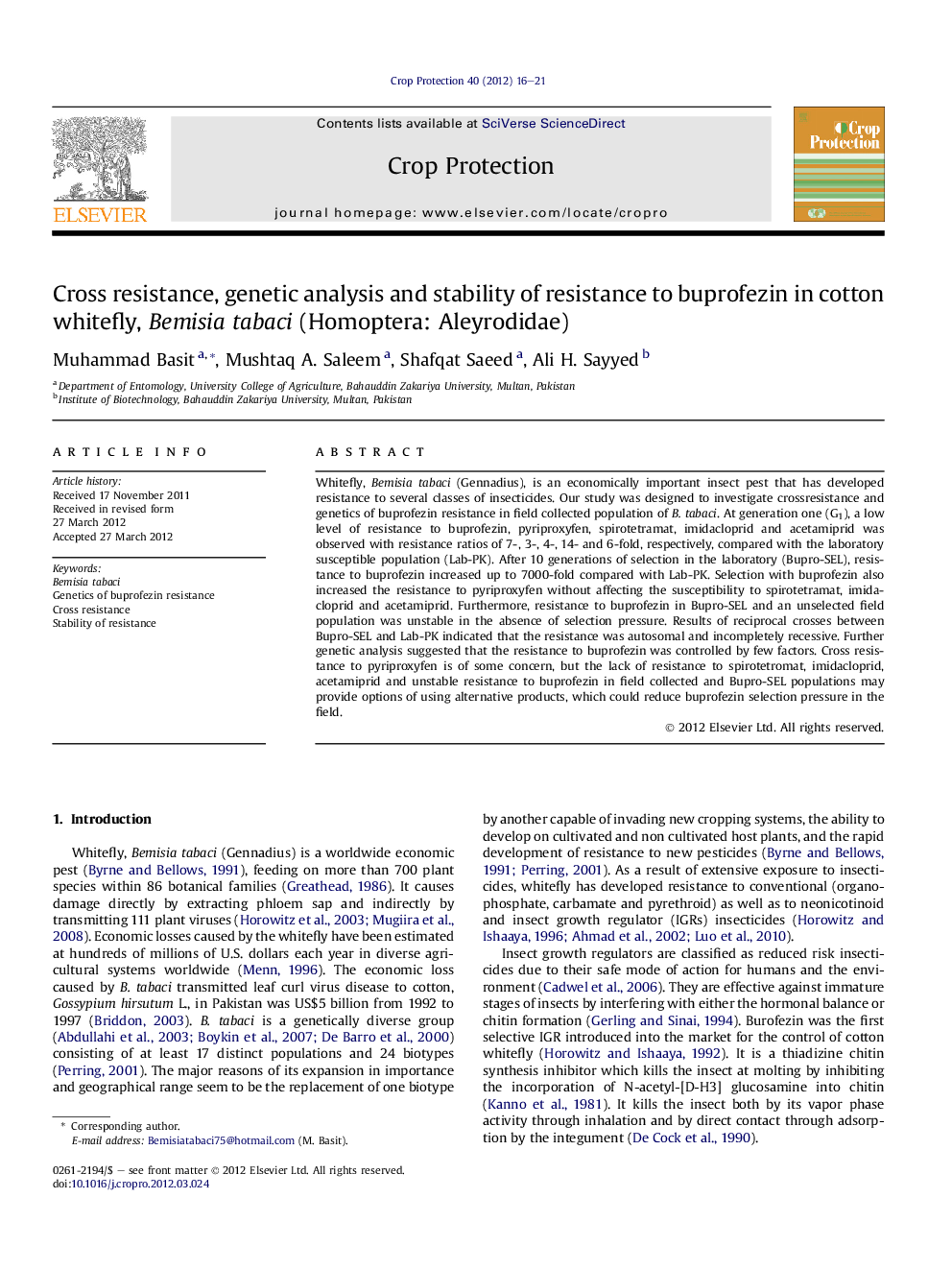| Article ID | Journal | Published Year | Pages | File Type |
|---|---|---|---|---|
| 4506309 | Crop Protection | 2012 | 6 Pages |
Whitefly, Bemisia tabaci (Gennadius), is an economically important insect pest that has developed resistance to several classes of insecticides. Our study was designed to investigate crossresistance and genetics of buprofezin resistance in field collected population of B. tabaci. At generation one (G1), a low level of resistance to buprofezin, pyriproxyfen, spirotetramat, imidacloprid and acetamiprid was observed with resistance ratios of 7-, 3-, 4-, 14- and 6-fold, respectively, compared with the laboratory susceptible population (Lab-PK). After 10 generations of selection in the laboratory (Bupro-SEL), resistance to buprofezin increased up to 7000-fold compared with Lab-PK. Selection with buprofezin also increased the resistance to pyriproxyfen without affecting the susceptibility to spirotetramat, imidacloprid and acetamiprid. Furthermore, resistance to buprofezin in Bupro-SEL and an unselected field population was unstable in the absence of selection pressure. Results of reciprocal crosses between Bupro-SEL and Lab-PK indicated that the resistance was autosomal and incompletely recessive. Further genetic analysis suggested that the resistance to buprofezin was controlled by few factors. Cross resistance to pyriproxyfen is of some concern, but the lack of resistance to spirotetromat, imidacloprid, acetamiprid and unstable resistance to buprofezin in field collected and Bupro-SEL populations may provide options of using alternative products, which could reduce buprofezin selection pressure in the field.
